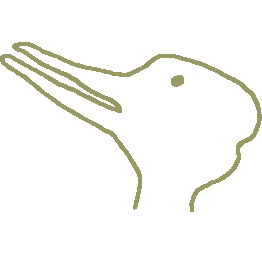Blunderov
Adept
    
Gender: 
Posts: 3160
Reputation: 8.00
Rate Blunderov

"We think in generalities, we live in details"
  
|
 |
Bone in the throat.
« on: 2006-09-26 02:59:55 » |
 |
[Blunderov] The implications of this discovery have not yet been fully appreciated I weyken. The hyoid is the bone that went on to enable brains to broadcast themselves beyond their own lifetimes like light from distant and long dead stars.
http://www.aussmc.org/LucysBaby.php
Scientist respond to new early human fossil discovery
In an article published in the Journal Nature on September 21, scientists announce the discovery of fossilised remains of a very early primitive human child (Australopithecus afarensis), "Lucy's baby", in Ethiopia (see www.nature.com/nature for details). Here Australian experts comment on the significance of the find.
Image available for news reporters on request. Email info@aussmc.org or call 08 8207 7415.
As further comments come in, we will post them here.
Professor Peter Brown is an expert in human evolution from the School of Human and Environmental Studies at the University of New England in NSW and has worked with fossil remains from Asia, Africa and Europe.
"Wonderful discovery, from an excellent team of scientists.
After five years of patient toil Alemseged and colleagues have reported a truly amazing discovery from the Ethiopian desert. Preserved in a block of sandstone for more than three million years, the skeleton of this early human relative, provides a unique insight into the behaviour, growth and locomotion of our first bipedal ancestors. A member of the same species, Australopithecus afarensis, as the famous “Lucy” the new infant skeleton provides evidence from the shoulder and ear canals that the first small-brained bipeds may have spent a lot of time in the trees. Truly remarkable."
Colin Groves, Professor of Archaeology and Anthropology at the Australian National University in Canberra. His research focuses on human evolution.
"This is remarkable – its completeness is extraordinary. We have parts of the body we didn’t know about before. We have a scapula and a hyoid which are particularly important.
It is a very rare skeleton where the hyoid still remains. Only one other hyoid is known from the entire human fossil record. This is interesting because it is more like that of gorillas and chimps and suggests that the vocalisations were loud and forthright. I would speculate that its shape changed in humans to allow sophisticated movements of the larynx to accommodate early language.
The other interesting thing is that for almost the first time we have a complete scapula. It is more like that of a gorilla than a chimpanzee or human. it indicates strongly that they were moving along the ground mostly on two legs but sometimes also supporting themselves on their knuckles and might dispute the idea that they were still doing a lot of clambering about in trees."
Professor Maciej Henneberg is Head of Anatomical Sciences At the University of Adelaide. He has studied mechanisms of human evolution and human growth and development working with skeletal materials and living children in South Africa, USA, Australia, Italy and Poland.
"The new find adds support to the idea that Australopithecus afarensis (Lucy and her tribe) were bipedal creatures with very ape-like upper bodies. Their upper limbs seem to be adapted to climbing which is somewhat difficult to reconcile with erect bipedal walking. To my mind a better explanation is that of "hand supported bipedalism" in which creatures walk bipedally in an upright position but support themselves by holding onto lower branches of trees. We humans still like to do it by holding a handrail when climbing the stairs or holding onto railings above our heads while standing on a bus or suburban train. We also like to assist our legs with our hands by using walking sticks. It maybe that Lucy and her tribe lived in an environment that offered hand holds for upright walking creatures - a bushland with trees too small to climb, yet tall and strong enough to provide handgrip that relieved a bit of pressure of body weight on the feet and helped to stabilise the vertical body."
Dr Colin Pardoe is an independent archaeologist and biological anthropologist. He has considerable experience with archaeology in the Murray – Darling Basin, as well as in South Australia, NSW, Victoria and WA.
"In palaeontology, we generally focus on adults of the mammals because there is a final adult form to study and also because for mammals and the primates in particular, relatively low juvenile mortality rates mean that fewer fossils of children will be found. For these reasons the finding of an ancient juvenile fossil in our line is both hugely exciting and informative, but also frustrating for the lack of comparisons.
The Dik-1-1 skeleton preserves in good detail many features that provide a window into ancestral human growth and development at an important time – several million years after our lineage split from the lines leading to chimpanzees and gorillas, and before the evolution of a large brain.The tiniest of bones – the hyoid, which is suspended in the throat – provides the clearest snapshot of speech capabilities, or rather their lack, at this time. The scapula, or shoulder-blade, is surprisingly gorilla-like rather than what we might have expected in a bipedal human ancestor that had already spent a considerable amount of time walking on two legs and probably inhabiting the river fringes of savannah plain."
|




